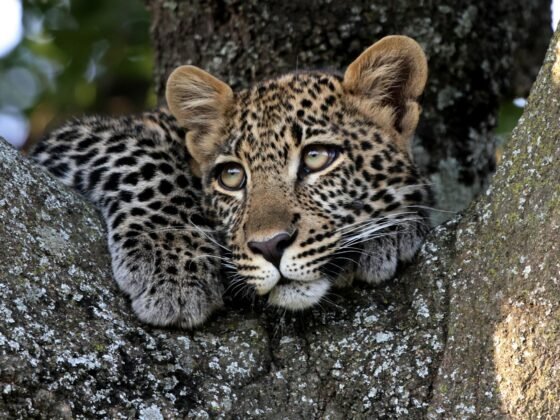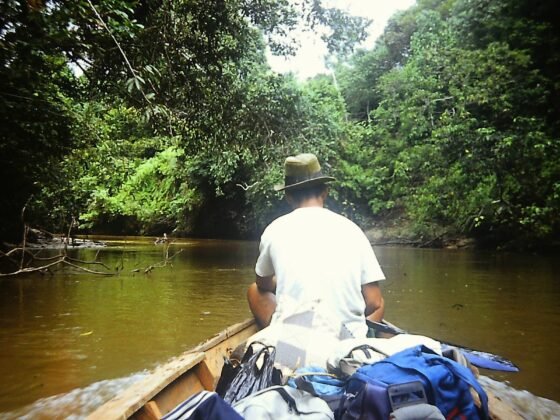
The Himalayas are the youngest mountains in the world and for this reason, they are also the tallest. If you look at the development of civilizations, people always preferred to stay in the plains for agriculture and transportation.
Thus, our bodies are now conditioned to live in the lower regions. Hence, if you want to challenge your body and for a change, you must try high-altitude treks.
As you conquer the high altitude, and navigate the rugged surroundings, a sense of accomplishment takes over. The experiences you will gather throughout your trip can be transformative, making you a better human. Hence, we believe that you must try the Himalayan treks at least once in your life.
High-Altitude Trekking Overview
Treks above 3,000 meters are regarded as high-altitude treks. As you reach 3,000 meters, the air thins substantially, oxygen gets rarer, and atmospheric pressure drops.
The decrease in oxygen level in the air can lead to high-altitude illnesses such as Acute Mountain Sickness (AMS), High Altitude Pulmonary Edema (HAPE), and High-Altitude Cerebral Edema (HACE).
The main symptoms of altitude sickness include headache, nausea, dizziness, fatigue, and difficulty breathing. Most Himalayan regions do not have adequate treatment centers, so you must consider buying travel insurance.
Trekking at high altitudes also presents mental challenges. You must be determined enough to complete the trek. At high passes, taking even a single step feels incredibly difficult. The paths are full of steep slopes, and you must remain cautious or else, you risk the danger of falling hundreds of feet down.
In high trek regions, you cannot prevent altitude sickness, but you can minimize the chances. The first and foremost rule to avoid altitude sickness is to walk at your own pace. Further, your itinerary must be well thought out.
You must remain hydrated and avoid dairy, meat, tobacco, and alcohol. As far as possible, you should trek high and sleep low. This is also called the golden rule of trekking.
How to prepare for high-altitude treks?
High-altitude treks are not normal hikes in the parks. You must prepare your body to adapt to harsher conditions while ensuring mental confidence. Here are some of the ways to prepare your body.
- Physical Fitness and Mental Preparedness
For physical fitness, you must focus on regular cardiovascular exercises such as hiking, running, or cycling to improve your stamina. For mental preparedness, you can practice mindfulness and be optimistic about facing anything on the trails.
- Training and Conditioning for Challenging Terrain
If you live near mountainous regions, you can simulate the conditions of a high-altitude trek. You can incorporate steep ascents and descents into your practice trails. We further suggest you carry a regular backpack during such simulations.
- Gear, Equipment, and Permits
Just preparing your body and mind for the trek is not enough. You will need to use proper equipment, clothing, and gear. This ensures you are not exposed to harsh climates in high elevations. You should also check if the treks require permits and plan accordingly.
- Health and Medical Considerations
You must also consider your health before planning a high-elevation trek, especially for those with heart, lung, or blood diseases. We also encourage you to bring first-aid medical kit with you.
Top high-altitude Himalayan treks
Here are the five most prominent high-altitude treks, known for their thrill factor and transformative experiences.
- Everest Base Camp Trek (Nepal)
The Everest Base Camp Trek is an iconic journey taking you to the base camp of the earth’s highest peak, Mount Everest, at an altitude of 5,364 meters (17,598 feet).
The trail offers breathtaking views of the Himalayan peaks, Sherpa culture, and the famous Tengboche Monastery. If you want you can follow more challenging treks that progress through several high-altitude passes.
In addition to the Everest Base Camp and Mt. Everest, the major attractions include Sagarmatha National Park, Namche Bazaar (a town regarded as the Gateway to Everest), Khumjung and Tengboche monasteries, Kala Patthar Viewpoint (5,555m), and Khumbu glacier.
The Everest Base Camp trek is a gradual ascent. You will arrive at the Lukla airport at 9,334 ft (2,845 m) and then slowly ascend, reaching Everest Base Camp (5,364m) and Kalapathhar (5,555m).
Most trekkers acclimatize for at least a day at Namche Bazaar (3,440 meters), Dingboche (4,410 meters), and Lobuche (4,940 meters).
- Annapurna Circuit Trek (Nepal)
The Annapurna Circuit Trek is known for its diversity of landscapes and cultural encounters. The trek circles the Annapurna massif, reaching a height of 5,416 meters (17,769 feet) at the Thorong La Pass.
The trails start from subtropical forests and gradually ascend to high-altitude deserts. On the way, you will pass numerous Gurung and Thakali villages.
The Annapurna Circuit starts from Bhulbhule at 845m (2,815ft) and reaches Thorong La High Pass at 5,416m (17,756ft). Hence, most trekkers spend a day each acclimatizing at Manang (3,540 meters) and Thorong Phedi (4,525m).
Throughout the trek, you will enjoy stunning views of the landscapes, mainly the towering peaks in the background.
However, there are some sites, you must visit, including Pisang and Manang Villages, which provide an opportunity to immerse in the local culture while interacting with the warm-hearted locals.
Before reaching the Muktinath Temple from the east, you have to cross the Thorong La Pass (5,416m). This pass presents a thrilling challenge while rewarding you with panoramic views of the surrounding peaks.
The sacred Muktinath Temple, an important religious site for Hindus and Buddhists, offers trekkers a unique cultural experience. The 108 stone spouts and eternal flame in this temple premises are popular among the pilgrims.
Annapurna Circuit is incomplete without a side trip to Poon Hill famous for its breathtaking sunrise views over the Annapurna and Dhaulagiri ranges.
- Gokyo Lakes Trek (Nepal)
The Gokyo Lakes Trek takes trekkers to the pristine Gokyo Valley, known for its turquoise glacial lakes, stunning glaciers, and grand Himalayan vistas. There are several highlights of the Gokyo Lakes trek.
The shimmering Gokyo Lakes, including the main Gokyo Lake and other smaller lakes, look otherworldly. The vibrant colors of the lakes set against the backdrop of majestic peaks create a surreal and picturesque landscape.
In the Gokyo Ri region, you must not miss reaching the Gokyo Ri viewpoint from where you can get the breathtaking panorama of Everest, Lhotse, Makalu, and Cho Oyu, among other peaks.
Further, you will also see the mesmerizing views of Everest and the Gokyo Lakes from a different vantage point. You can even add the Gokyo Lakes trek with the Everest Base Camp trek.
4. Valley of Flowers Trek (India)
The Valley of Flowers trek takes you to a UNESCO World Heritage Site in Uttarakhand in India. The park is famous for its stunning alpine meadows and floral displays.
The elevation change in this park is from 3,352 to 3,658 meters. The colorful blooms in this park are beyond word description. The trek itself is not very difficult.
There are several highlights to this trek. The principal among them is the valley of flowers, where varieties of alpine flowers bloom in the monsoon season.
The whole scenery looks surreal, and it is a photographer’s paradise. Most treks also include a visit to the Hemkund Sahib, a Sikh pilgrimage site. Trekkers will also visit the Ghangaria, the base camp for the Valley of Flowers Trek.
The altitude profile of the Valley of Flowers Trek involves moderate ascents, with the highest point being Hemkund Sahib (4,160m).
Adequate acclimatization and proper rest are essential at Ghangaria. We advise trekkers to stay hydrated and take their time during the ascent to avoid altitude-related issues.
5. Markha Valley Trek (India)
This is one of the best high-altitude treks in the Ladakh Himalayas region in India. The highest point of the Markha Valley Trek is the Kongmaru La Pass, at an altitude of 5,130 meters (16,830 feet).
In addition to these delightful mountain ranges, you will enjoy the views of the unique mud houses on the barren Ladakh mountain. There are homestays and tea houses along the trek, making the trip easier and more fulfilling.
Marpha Valley trek starts from Hemis National Park, famous for unique wildlife like snow leopards, Himalayan griffon, and blue sheep. Crossing Markha and Zinchen add a thrill factor to the trek.
The Markha Valley villages and the ancient monasteries will pique your interest in the spiritual side of life. Moreover, you will get fantastic views of the Kang Yatse, and Zanskar while crossing the Kongmaru La Pass.
The altitude profile of the Markha Valley Trek involves gradual ascents, with the highest point being Kongmaru La Pass. Acclimatization is essential at the villages of Leh (3,500 meters) and Markha (3,700 meters) to allow trekkers to adjust to the high-altitude conditions.
Conclusion
Most high-altitude Himalayan treks are long hikes in the remote parts, which provide ample time for self-discovery, resilience, and a profound connection with nature.
The constant changes in landscapes and the gigantic peaks force a trekker to think beyond the physical realm. Hence, to experience spirituality, you must participate in high-altitude treks.
As the Himalayan treks demand determination and courage, trekkers need to push beyond their comfort zone and adapt. Hence, we recommend you at least try one of the high-altitude treks in the Himalayas for a transformative experience.











